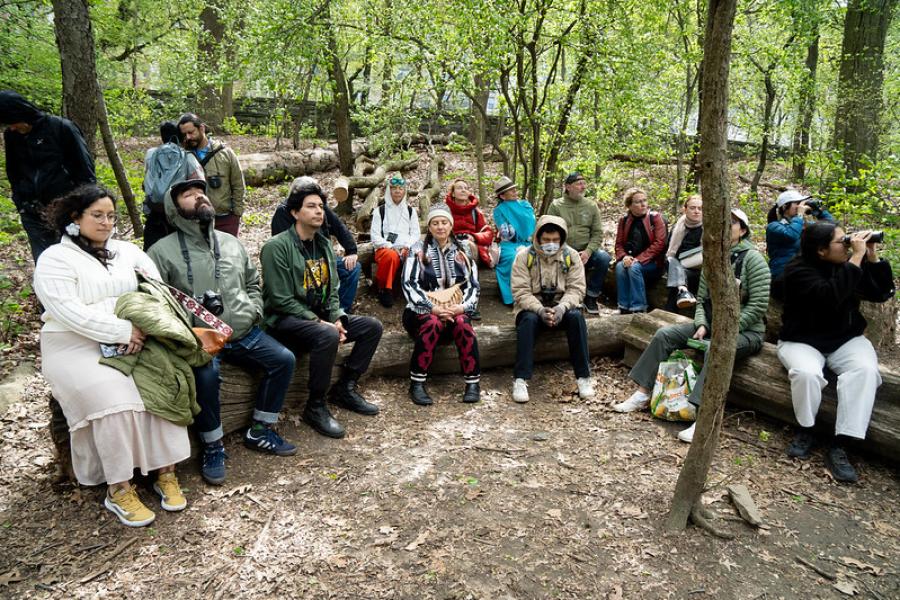Thousands of distinct American Indian languages have been silenced forever due to pandemics of smallpox and other diseases brought by European contact, acculturation, and total annihilation. However, some still exist and various tribes are doing their best to revitalize their languages.
"Time is of the essence," according to Tom Belt, language instructor at Cherokee Elementary School on Qualla Boundary, in Cherokee, North Carolina. He explains that linguists studying Native languages estimate there are maybe 50 years left before all Native languages are completely gone if they continue to dissipate at the rate they have over the past 100 years. So Belt is extremely enthusiastic about the preschool's current language immersion program. Preschool children are being taught the Cherokee language and will continue in this program until they graduate from high school. Parents and community members are also involved.
The Cherokee language is a descriptive, experiential language that embodies a whole culture, according to Belt. "With all its intonations, inflections, linguistic and physical gestures, the language carries within it our cultural perspective, our cultural thinking -- the way we view and interpret the world," he says.
Belt notes English terminology consists primarily of "I." For example, "I want a drink of water." Or, "I see the bear." In Cherokee, the object always begins a sentence. "Water I want to drink." Or, "Bear I see." First the object, then the personage is interwoven with the verb. Even the description goes before the pronoun. For example, "Black bear I saw." Things are pointed out in the world with the thought that you are here with them as opposed to things being here with you. Not less than or more than, but here with you. To Belt, people who speak this way think in terms of spiritual interconnectedness. He believes the thinking patterns of the children involved in the immersion program will definitely be expanded.
"Our language carries with it all the things we should know," says Belt. "Our culture, our past, our way of looking at life. All are intrinsic in the language. If we cannot speak it, if we cannot understand it, then a great deal of cultural perspective and cultural thought becomes almost impossible to express. Many people who cannot speak Cherokee may know what it feels like to be Cherokee but it is very hard for the complete cycle of experience to be expressed unless it is said in the language."
Many of the sacred Cherokee ceremonies can't be performed unless in the original language. Belt also feels using the Cherokee language in these ceremonies makes the experience more profound and is especially important to young people. There are some prayers and songs that are just not translatable. "Our language is the only living thing that is passed down from generation to generation," he states. "At one time our newspaper was printed in the Cherokee syllabary as well as in English. Perhaps that will happen again."
While attending a conference on revitalizing indigenous languages in Arizona, Belt heard a speaker explain why he works so hard to save his tribal language. When people questioned the speaker as to why he kept fighting such a hard battle that is seemingly against all odds he answered, "When my journey is over, and I go to sit with my elders, I want to understand them. But more importantly, I want them to understand me." Belt agrees wholeheartedly.
"If you take away a people's language, take away the way they think, then they no longer are who they really are, regardless of skin color or blood quantum," says Belt. "Then they become a people with a history but no future," he adds sadly. "Our language did not diminish overnight, therefore it is not going to be revitalized overnight. It will take time, dedication, and lots of work."
Years ago, the US Government tried to immerse Indian children in the American culture. Today, there is tribal determination to immerse Cherokee children in their culture through teaching the language. Things do change, and some things for the better. People like Tom Belt and the teachers and parents participating in this immersion program are to be commended. Because of them, and as importantly the support of the community, Cherokee children are learning how to be themselves and what it truly means to be American Indian. With this comes not only self-respect, it assures continuation of a strong and beautiful culture that has at its very core the refusal to die out.
Article copyright Cultural Survival, Inc.


